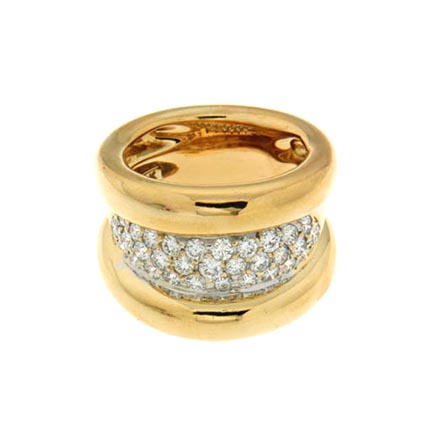Coordinating Diamonds
No two diamonds are exactly alike. Differences may be as dramatic as step and brilliant cuts. Others are subtle, such as slightly steeper tops. Diamond engagement rings and wedding bands often have multiple jewels. To ensure an attractive ring, matching the gemstones is important.
Among the factors to consider when matching diamonds is the Four Cs. Carat, color, cut and clarity are the major qualities jewelers look for when examining gems. By using the Four Cs, designers can quickly search for coordinating gemstones. After this initial step, closer sorting begins.

Within the same diamond cut, there are variations among individual stones. The most apparent is measurements like the jewel’s diameter. Other factors designers keep in mind include the gemstones’ depths and symmetry. The table, or topmost facet, should be a consistent size among all the diamonds for a uniform sparkle.
Pave settings use tiny stones and even smaller mounts to make jewelry glitter. Pave wedding bands look like they’re covered in diamonds. One of the keys to their beauty is ensuring its sparkle is the same throughout the band. A jeweler might search through piles of gems before finding the perfect match for your ring.
Channel mounts carve a groove into the ring and place a row of diamonds inside. This setting can be used for side stones, or be the main feature of a ring. While channel set diamonds may consist of uniform or graduated sizes, its Four Cs must be harmonious. Matched diamonds help create an attractive ring.





